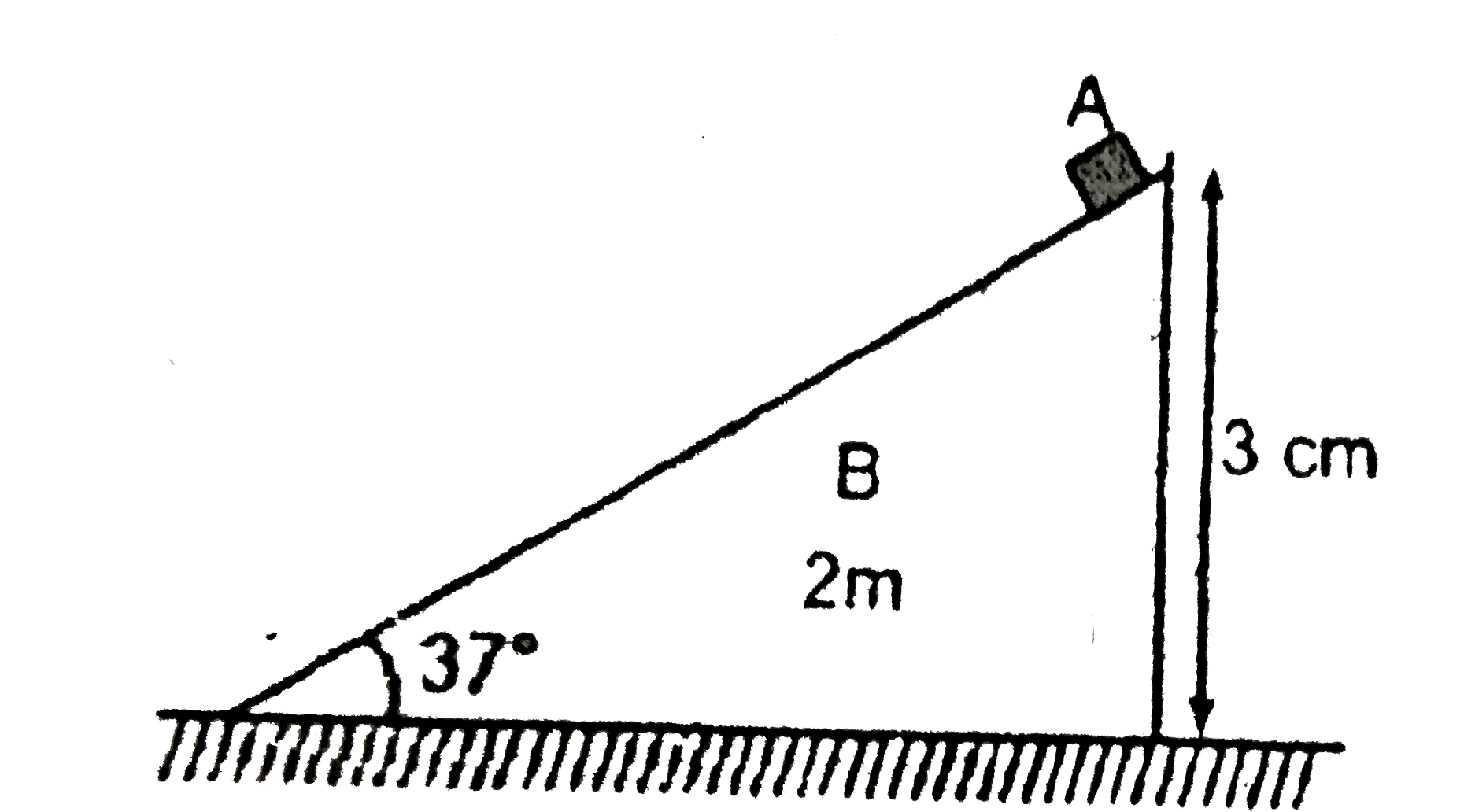Complete Solutions to DPP 50 of chapter DAILY PRACTICE PROBLEMS of Class 11 book with complete answers and questions
| Class 11 | PHYSICS |
| Chapter | DAILY PRACTICE PROBLEMS |
| RESONANCE | DPP 50 |
| Number Of Questions | 5 |
| Academic Year | 2023-24 |
The string is now replaced by a spring of spring constant `k` and natural length `l`. Mass `2m` is fixed at the bottom of the frame . The mass `m` which has the other end of the spring attached to it is brought near the mass `2m` and released as shown in figure. The maximum angle `theta` that the spring will substend at the centre will be `: (` Take `k=10N//m,l=1m,m=1kg` and `l=r)`

View SolutionIn the figure `PQRS` is a frictionless horizontal plane on which a particle `A` of mass `m` moves in a circle of radius `r` with an angular velocity `omega` such that `omega^(2)r=g//3` .Another particle of mass `m` is tied to `A` through an inextensible massless string. `O` is the hole through which string passes down to `B.` B can move only vertically. The tension in the string at this instant will be `:`

View SolutionTwo balls of same mass are released simultaneously from heights h & 2h from the ground level. The balls collide with the floor & stick to it. Then the velocity-time graph of centre of mass of the two balls is best represented by :
View SolutionDisplacement `-` time curve of a particle moving along a straigh line is shown. Tangents at `A` and `B` make angles `45^(@)` and `135^(@)` with positive `x-` axis respectively. The average acceleratively. The average acceleration of the particle during `t=1,t=2` second is `:`

View SolutionA particle `A` of mass `m` is situated at highest point of wedge `B` of mass `2m` is released from rest. Then distance travelled by wedge `B (` with respect to ground `)` when particle `A` reaches at lowest position. Assume all surfaces are smooth.

View Solution
DPP 50 questions and complete solutions for chapter DAILY PRACTICE PROBLEMS of RESONANCE ENGLISH of Class 11
All Exercises from RESONANCE Class 11 PHYSICS DAILY PRACTICE PROBLEMS
- comprehension
- Compreshension
- dpp 15
- dpp 16 physics
- dpp 17
- dpp 18
- dpp 19
- dpp 2 PHYSICS
- dpp 20
- dpp 21
- dpp 22.
- dpp 24
- dpp 25
- dpp 26
- dpp 27
- dpp 28
- dpp 30
- dpp 31
- dpp 32
- dpp 33
- dpp 34
- DPP 35
- dpp 36
- Dpp 37
- dpp 38
- dpp 39
- dpp 40
- dpp 41
- dpp 42
- dpp 43
- dpp 44
- DPP 45
- dpp 46
- dpp 47
- dpp 48
- dpp 49
- DPP 50
- dpp 51
- dpp 52
- dpp 53
- dpp 54
- DPP 55
- dpp 56
- dpp 57
- dpp 58
- dpp 59
- dpp 60
- DPP 62
- dpp 63
- dpp 64
- DPP 65
- dpp 66
- dpp 67
- dpp 68
- dpp 69
- dpp 70
- dpp 71
- dpp 72
- dpp 74
- dpp 75
- dpp 76
- DPP 77
- dpp 78
- dpp 79
- DPP 8 PHYSICS
- dpp 80
- dpp 81
- dpp 82
- dpp 83
- dpp 84
- dpp 85
- dpp 86
- dpp 87
- dpp 88
- dpp 89 illustration
- dpp 90 Illustration
- dpp 91 illustration
- dpp 92 illustration
- Dpp no 10 physics
- Dpp no 11 physics
- Dpp no 12 Physics
- Dpp no 6 physics
- DPP NO 7 PHYSICS
- DPP no 9 physics
- Dpp no. 13 physics
- DPP NO. 14 PHYSICS
- DPP NO. 5 Physics
- dpp23
- dpp29
- dpp61
- dpp73
- Now answer the following :
- PHYSICS
- TRUE/FALSE